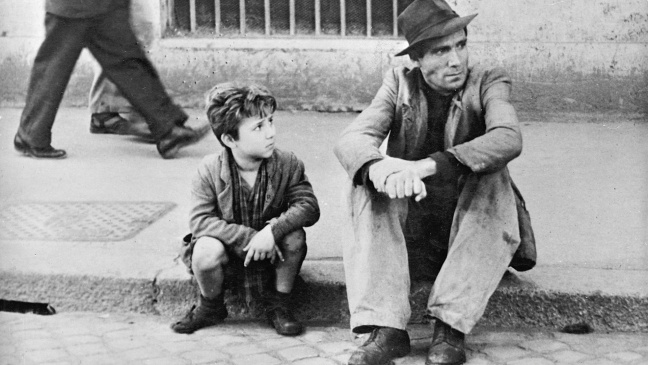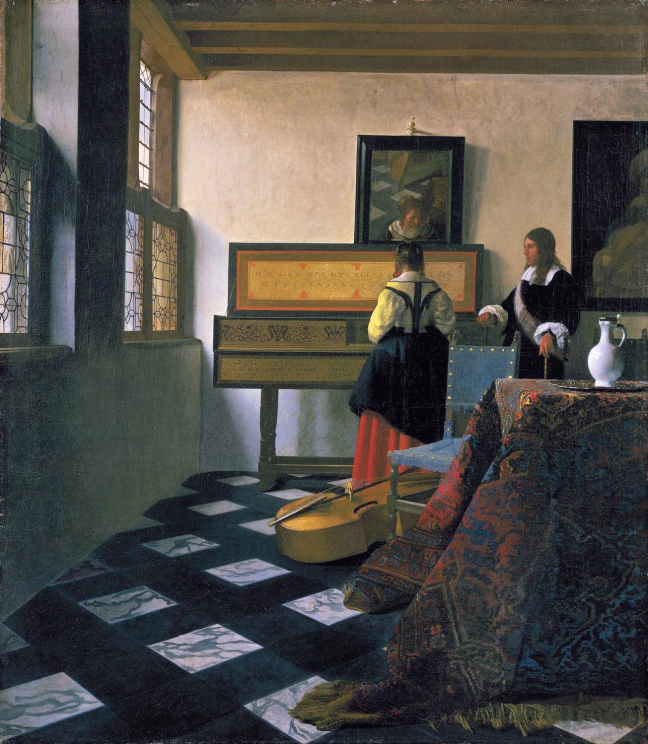Canonized by Charles Darwin’s 1859 On the Origin of Species, natural history and its new subfield, evolutionary biology, was all the rage in the mid- and late-19th century. It was a type of science whose evidence lay in painstaking observation. Indeed, the methods of 19th-century natural science were inspired by the work Carl Linneaus, the father of modern taxonomy, had done a century prior. We can thank Linneaus for the funny Latin names of trees and plants we see alongside more common English terms at botanical gardens (e.g., Spanish oak as quercus falcata). Linneaus collected, observed, and classified animals, plants, and minerals, changing the way we observe like as like and dislike as dislike (we may even stretch and call him the father of machine learning, given that many popular algorithms, like deep neural nets or support vector machines, basically just classify things). One of my favorite episodes in the history of Linnean thought gradually seeping its way into collective consciousness is recounted in D.G. Burnett’s Trying Leviathan, which narrates the intellectual history of Maurice v. Judd, an 1818 trial “that pitted the new sciences of taxonomy against the then-popular-and biblically sanctioned-view that the whale was a fish.” The tiniest bacteria, as the silent, steady Redwood trees, are so damn complex that we have no choice but to contort their features through abstractions, linking them, like as like, to other previously encountered phenomena to make sense of and navigate our world.
Taxonomy took shape as an academic discipline at Harvard under the stewardship of Louis Agassiz (a supporting actor shaping thinkers like William James in Louis Menand’s The Metaphysical Club). All sorts of sub-disciplines arose, including evolutionary biology-eventually leading to eugenics and contemporary genetics-and botany.
It’s with botany that things get interesting. The beauty of flowers, as classical haikus and sentimental Hallmark cards show, is fragile, transitory, vibrant in death. Flowers’ color, texture, turgidness, name your feature, change fast, while they are planted and heliotroping themselves towards light and life, as after they are plucked and, petal by petal, peter their way into desiccation and death. Flowers are therefore too transitory to lend themselves to the patient gaze of a taxonomist. This inspired George Lincoln Goodale, the founder of Harvard’s Botanical Museum, to commission two German glassblowers to make “847 life-size models representing 780 species and varieties of plants in 164 families as well as over 3,000 models of enlarged parts” to aid the study of botany (see here). The fragility of flowers made it such that artificial representations that could freeze features in time could reveal stronger truths (recognize this is loaded…) about the features of a species than the the real-life alternatives. Toppling the Platonic hierarchy, artifice was more real than reality.
I love this. And artifice as a condition for realism is not unique to 19th-century botany, as I’ll explore in the following three examples. Please add more!
Scientific Experiments by Doppler & Mendel
I’m reading Siddharta Mukherjee’s The Gene: An Intimate History in preparation for a talk about genetic manipulation he’s giving at Pioneerworks Thursday evening. He’s a good writer: the prose is elegant, sowed with literary references and personal autobiography whose candor elicits empathy. 93 pages in to the 495-page book, I’ve most appreciated the more philosophical and nuanced insights he weaves into his history. The most interesting of these insights is about artifice and realism.
The early chapters of The Gene scan the history of genetics from Pythagoras (semen courses through a man’s body and collects mystical vapors from each individual part to transmit self-information to a womb during intercourse) through Galton (we can deliberately par elite with elite (selectively sterilize the deformed, ugly, and sickly) to favor good genes, culminating in the atrocities of eugenics and still lingering in thinkers like Nick Bostrom). Gregor Johann Mendel is the hero and fulcrum around which all other characters (Darwin included) make cameo appearances. Mendel is also the hero of high school biology textbooks. He conducted a series of experiments with pea plants in the 18500s-1860s that demonstrated how heredity works. When male mates with female, the traits of their offspring aren’t a hybrid mix between the parents, but express one of two binary traits: offspring from a tall dad and a short mom are either tall or short, not medium height; grandchildren of a tall son and a tall mom can end up short if the recessive gene inherited from grandma takes charge in the subsequent generation. (What the textbooks omit, and Mukherjee explains, is that Mendel’s work was overlooked for 40 years! A few scientists around 1900 unknowingly replicated his conclusions, only to be crestfallen when they learned their insights were not original.)
Mukherjee cites Christian Doppler (of the eponymous Doppler effect) as one of Mendel’s key inspirations. Mendel was a monk isolated in Brno, a small city in the contemporary Czech Republic. He eventually made his way to Vienna to study physics under Doppler. Mukherjee describes the impact Doppler had on Mendel as follows:
“Sound and light, Doppler argued, behaved according to universal and natural laws-even if these were deeply counterintuitive to ordinary viewers or listeners. Indeed, if you looked carefully, all the chaotic and complex phenomena of the world were the result of highly organized natural laws. Occasionally, our intuitions and perceptions might allow us to grasp these natural laws. But more commonly, a profoundly artificial experiment…might be necessary to demonstrate these laws.”
A few chapters later, Mukheree states that Mendel’s decision to create a “profoundly artificial experiment,” selectively creating hybrid pea plants out of purebred strains carrying simple traits, was crucial to reveal his insights about heredity. There’s a lot packed into this.

First, there’s a pretty profound argument about epistemology and relativism. This is like and dislike the Copernican revolution. Our ordinary viewpoints, based on our day to day experiences in the world, could certainly lead to the conclusion, held for thousands of years, that the Sun revolves around the Earth. Viewed from our subjective perspective, it just makes more sense. But if we use our imagination to transport ourselves up to a view from the moon (as Kepler in his Somnium, a radically weird work of 17th-century science fiction), or somewhere else in space, we’d observe our earth moving around the sun. What’s most interesting is how, via cultural transmission and education, this formerly difficult and trying act of the imagination has become acclimated as collective conscious habit. Today, we have to do more intellectual and imaginative work to imagine the Earth revolving around the Sun, even though the heliocentric viewpoint runs counter to our grounded subjectivity. Narcissism may be more contingent and correctable than digital culture makes it seem.
Next, there’s a pretty profound argument about what kinds of truths scientific experiments tell. Mukherjee aligns Mendelian artifice with mechanistic philosophy, where the task of experimentation is to reveal the universal laws behind natural phenomena. These laws, in this framework, are observable, just not using the standard perceptual habits we use in the rest of our life. There are many corollary philosophical questions about the potential and probability of false induction (Hume!) and the very strange way we go about justifying a connection between an observed particular and a general law or rule. It does at least feel safe to say that artifice plays a role in enabling us to contort and refract what we see to enable us to see something radically new. Art, per Viktor Shklosky (amidst others), often does the same.
Italian Neorealist Cinema
I have a hell of a time remembering the details of narrative plots, but certain abstract arguments stick with me year after year, often dormant in the caverns of my memory, then awakened by some Proustian association. One of these arguments comes from André Bazin’s “Cinematic Realism and the Italian School of Liberation.”
Bazin was writing about the many “neorealist” films directors like Luchino Visconti, Roberto Rossellini, and Vittorio De Sica made in the 1940s and 50s. It was post war, Mussolini’s government had fell, Cinecittà (the Hollywood of Italy) had been damaged, and filmmakers had small production budgets. The intellectual climate, as that which provided the foundation for Zola in the late 19th century, invited the opportunity to throw the subjects deemed fit for art to the wayside and focus on the real-world suffering of real-world everyday people. These films are characterized by their use of nonprofessional actors, depictions of poverty and basic suffering, and their lack of happy ending narratives. They patiently chronicle slow, quotidian life.

Except that they don’t. Bazin’s core insight was that neorealism was no less artificial-or artful-than the sentimental and psychological dramas of popular Hollywood (Cinecittà) films. Bazin’s essay effectively becomes a critical manifesto for the techniques directors like Rossellini employed to create an effect that the viewer would perceive as real. The insights are similar to those Thomas Mann makes in Death in Venice, where a hyper orderly, rational German intellectual, Gustav von Aschenbach, succumbs to Dionysian and homoerotic impulses as he dies. Mann uses the story of Aschenbach as an ironic vehicle to comment on how artists can fabricate emotional responses in readers, spectators, and other consumers of art. There is an unbridgeable gulf between what we have lived and experienced, and how we represent what we have lived and experienced in art to produce and replicate a similar emotional experience for the reader, spectator, or consumer. The reality we inhabit today is never really the reality we watch on screen, and yet the presentation of what seems real on screen can go on to reshape how we then experience what we deem reality. As with the Copernican turn, after watching De Sica’s Bicycle Thief, we may have to do more intellectual and imaginative work to see poverty as we saw it before our emotions were touched by the work of art. Artifice, then, is not only required to make a style that feels real, but can crystallize as categories and prisms in our own mind to bend what we consider to be reality.
A slightly different cinematic example comes from the 2013 documentary Tim’s Vermeer, which documents technology entrepreneur Tim Jenison’s efforts to test his hypothesis about the painting techniques 17th-century Dutch master Johannes Vermeer used to create his particular realist style. Jenison was fascinated by the seemingly photographic quality of Vermeer’s paintings, which exhibit a clarity and realism far beyond that of his contemporaries. Content following form (or vice versa), Vermeer is also renowned for painting realistic, quotidian scenes, observing a young woman contemplating at a dining room table or learning to play the piano. As optics was burgeoning in the 17th century (see work by Newton or his closest collaborator, Christiaan Huygens), Jenison hypothesized that Vermeer achieved his eerie realism not through mystical, heroic, individual, subjective inspiration, but through rational, patient, objective technique. To test his hypothesis, Jenison tasks himself to recreate Vermeer’s Music Lesson using a dual-mirror technique that reflects the real-world scene onto a canvas and then enables the artist to do something like paint by number to replicate the color until he notes a gradient of difference with the reflected scene. What’s just awesome about this film is that Jenison’s technique to evaluate his hypothesis about Vermeer’s technique forces him to reverse engineer the original real-world scene that Vermeer would have painted. As such, he has to learn about 17th-century woodcutting (to recreate the piano), 17th-century glass staining (to recreate the stain-glassed window), and 17th-century textiles (to recreate the tapestry that hangs over a table). This single Vermeer painting-catalyzed by Jenison’s dedication and obsession to test his hypothesis-becomes a door into an encyclopedic world! The documentary is nothing short of extraordinary, not least because it forces us to question the cultural barriers between art/inspiration and science/observation (also not least because it includes some great scenes where the English artist David Hockney evaluates and accepts Jenison’s hypothesis). The two are porous, intertwined, ever interweaving to generate beauty, novelty, and realism.

Designing for User Adoption
The final example comes from my experiences with software UI/UX design. My first job after graduate school was with Intapp, a Palo Alto-based private company that makes software for law firms. Making software for lawyers poses a particular set of challenges that, like Mendel’s pea plant experiments, reveal general laws about how people engage with and adopt technology. Indeed, lawyers are notoriously slow to adopt new tools. First, the economics of law firms, governed by profits for partner, encourage conservatism because all profits are allocated on an annual basis to partners. Partners literally have to part with their commission to invest in technology that may or may not drive the efficiencies they want to make more money in the future. Second, lawyers tend to self-identify as technophobes: many are proud of their liberal arts backgrounds, and prefer to protect the relative power they have as masters of words and pens against the different intellectual capital garnered by quantitative problem solvers and engineers. Third, lawyers tend to be risk averse, and changing your habits and adopting new tools can be very risky business.
Intapp has a few products in its portfolio. One of them helps lawyers keep track of the time they spend making phone calls, writing emails, doing research, or drafting briefs for their different clients to inform the invoices they send to clients at the end of a billing period. Firms only get a solid return on investment from the product, Intapp Time (formerly Time Builder), if a certain percentage of lawyers opt to use it. You need sufficient numbers to log enough otherwise missed hours-and recover enough otherwise missed revenue-to cover for the cost of the software. As such, it was also critical that Intapp make the right product design and marketing choices to make sure the tool was something lawyers wanted to use and adopt.
What was most interesting were the design choices required to make that adoption happen. Because lawyers tend to be conservative, they didn’t want an application that radically changed how they did work or billed time from the habits they’d built and inculcated in the past (in particular the older generation). So the best technical solution, or even the most theoretically efficient or creative way of logging work to bill time, may not be the best solution for the users because it may push their imagination too far, may require too much change to be useful. Based on insights from interviews with end users, the Intapp design team ended up creating a product that mimicked-at least on the front end-the very habits and practices it was built to replace. Such skeuomorphism tells us a lot about progress and technology. Further thoughts on the topic appear in a former post.
Others
I can think of many other examples where artifice is the turnkey to perceive a certain type of truth or generate a certain type of realism. Generative probabilistic models using Bayesian inference do a better job predicting the future than data-centric regression models relying more directly on data. Thought experiments like the Trolley Problem are in the process of shifting from a device to comment on ethics to a premeditated, encoded action that can impact reality. Behind all of this are insights about how our minds work to make sense (and nonsense) of the world.
The featured image is of certain glass flowers that father and son glassblowers Leopold and Rudolf Blaschka made for Harvard’s natural history department between 1887-1936. Flowers are fragile: as a conditions so easily leads to their decay and death, they changed too quickly to permit the patient observation and study required by evolutionary biology. Artificial representations, therefore, allowed for more accurate scientific observations than real specimens.

One thought on “Artifice as Realism”